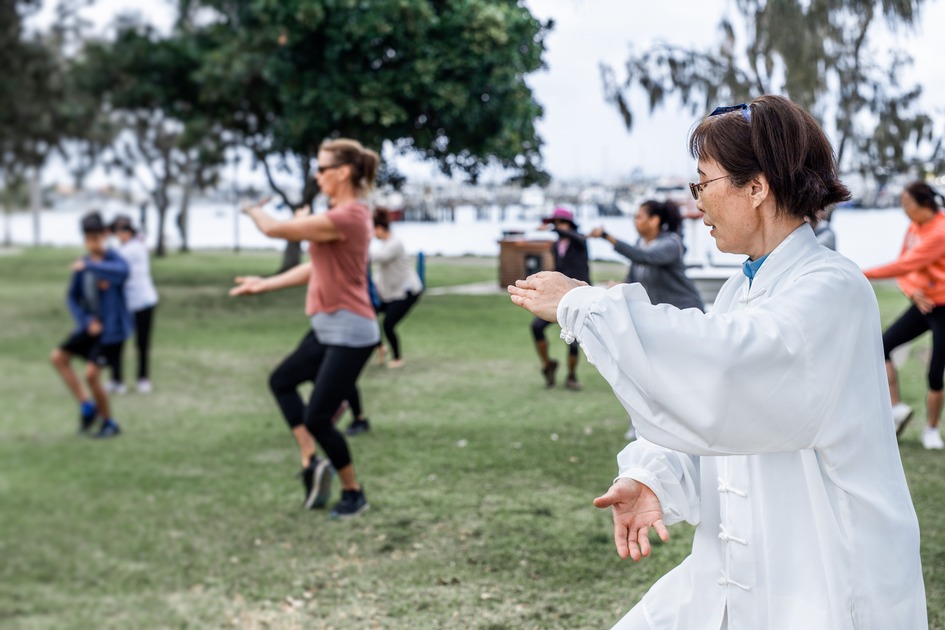The Insomnia Epidemic and the Limitations of Pharmacotherapy
The Landscape of Disordered Sleep: A Public Health Crisis
Insomnia constitutes a significant and escalating public health issue in industrialized nations. The condition is characterized by persistent difficulties with sleep initiation, duration, consolidation, or quality that occur despite adequate opportunity for sleep, and it is critically defined by its resultant daytime impairment. These impairments can manifest as fatigue, diminished cognitive function, mood disturbances, and reduced work performance, which are often the primary factors that compel individuals to seek treatment. Epidemiological data reveal a staggering prevalence, with acute or short-term insomnia affecting 30-50% of the population, often as a reaction to acute stressors. While many of these cases resolve, a substantial portion progresses to a chronic condition.
The prevalence of chronic insomnia in the general adult population is estimated to be between 5% and 10%, with some surveys indicating that as many as one-third of adults experience at least one core symptom. The disorder exhibits clear demographic patterns, being approximately twice as common in women as in men and showing a marked increase in prevalence with age. Modern medical understanding has shifted from viewing insomnia as merely a symptom of other conditions to recognizing it as a distinct disorder with its own pathophysiology. It maintains a complex, bidirectional relationship with a host of other medical and psychiatric conditions. Individuals with insomnia are more likely to develop cardiometabolic diseases such as hypertension and diabetes, and conversely, those with such diseases are more likely to suffer from insomnia. This interconnectedness underscores the systemic impact of disordered sleep and elevates the urgency of finding effective, safe, and sustainable treatments.
Despite the high prevalence and significant personal and societal consequences of insomnia, a profound gap exists between the number of individuals affected and those who receive evidence-based care. Surveys indicate that while up to half of primary care patients may experience insomnia, only a fraction—between 25% and 50%—discuss these issues with their providers, and a mere 6% report having specifically sought a physician’s help for their sleep difficulty. This discrepancy is compounded by a lack of proactive screening, with one survey finding that 70% of respondents reported that their clinicians had never asked them about their sleep. This under-recognition and undertreatment in clinical settings create a significant public health vacuum. In the absence of professional guidance toward proven therapies, a large portion of the population turns to self-help strategies, including over-the-counter products, herbal remedies, and alcohol—many of which have little evidence of efficacy and may carry their own health risks. This widespread “treatment gap” highlights a critical need for interventions that are not only effective but also highly accessible, safe for long-term use, and capable of being integrated into an individual’s life without specialized medical oversight.
The Pill Paradox: The Risks of Pharmacological Interventions
Pharmacotherapy, particularly the use of benzodiazepine receptor agonists (BZRAs) like benzodiazepines and “Z-drugs” (e.g., zolpidem), has long been a common approach to managing insomnia. However, these medications are fraught with significant risks and side effects that limit their utility, especially for the long-term management of a chronic condition. The most immediate and common adverse effect is a “hangover” that impacts next-day functioning. Approximately eight out of ten people who take sleep medicine experience this effect, which can include residual drowsiness, muddled thinking, dizziness, and impaired coordination. These impairments can dangerously affect a person’s ability to drive, work, or perform daily tasks safely. Other common side effects include dry mouth, headaches, muscle weakness, and digestive issues such as constipation or diarrhea.
Beyond these common side effects lie more severe dangers. Some prescription sleep aids can induce parasomnias, a class of disruptive sleep disorders that can cause individuals to engage in complex behaviors like sleepwalking, sleep-eating, or even sleep-driving while not fully conscious. These episodes are not typically remembered upon waking and pose a substantial risk of harm to the individual and others, leading the U.S. Food and Drug Administration (FDA) to require “black box warnings” on several of these medications.
Perhaps the most insidious risk associated with these medications is the high potential for tolerance, dependence, and addiction. Tolerance can develop in as little as seven days, meaning the user requires progressively larger doses to achieve the same sleep-inducing effect. This quickly leads to physical and psychological dependence, where the individual feels unable to sleep without the medication. When an attempt is made to discontinue the drug, users often experience a range of withdrawal symptoms, including anxiety, panic attacks, irritability, and, most problematically, “rebound insomnia”. Rebound insomnia is a phenomenon where the original sleep problems return with greater severity than before treatment began. This effect is a primary driver of relapse and long-term dependency, trapping the user in a self-perpetuating cycle. The individual, experiencing worsened insomnia upon cessation, logically but incorrectly concludes that their underlying condition is severe and that they are incapable of sleeping without the medication. In this way, the pharmacological “solution” becomes a direct cause of the problem’s chronicity, fundamentally altering the user’s relationship with sleep. This paradox—where the treatment for insomnia actively perpetuates it—highlights a fundamental flaw in the pharmacological model for managing a chronic disorder and powerfully underscores the need for alternative therapies that restore the body’s natural sleep-regulating functions rather than chemically overriding them.
The Behavioral Gold Standard: Understanding Cognitive Behavioral Therapy for Insomnia (CBT-I)
In response to the limitations of pharmacotherapy, the medical community has established Cognitive Behavioral Therapy for Insomnia (CBT-I) as the definitive first-line treatment for chronic insomnia. This recommendation is endorsed by major medical bodies, including the American College of Physicians, based on robust evidence demonstrating its superior long-term effectiveness compared to medication. CBT-I is a structured, multi-component therapeutic program that addresses the maladaptive thoughts and behaviors that perpetuate sleeplessness. Unlike medication, which induces an artificial state of sleep, CBT-I teaches individuals the skills to support and encourage their body’s natural sleep mechanisms.
The therapy typically takes place over 6-8 sessions and is comprised of several core components :
Cognitive Restructuring: This component targets the anxious and unhelpful thoughts that often surround sleep for people with insomnia. It helps individuals identify, challenge, and reframe negative beliefs, such as the fear of not being able to sleep or catastrophic thinking about the consequences of a poor night’s rest.
Stimulus Control: This behavioral intervention aims to re-establish the bed as a strong cue for sleep. Patients are instructed to use the bed only for sleep and sex, to leave the bedroom if they are unable to fall asleep within a set period (e.g., 10-15 minutes), and to only return when sleepy. This breaks the learned association between the bed and a state of frustrated wakefulness.
Sleep Restriction: This technique initially limits the amount of time a person spends in bed to the actual amount of time they are sleeping. This mild sleep deprivation helps to consolidate sleep and increase the homeostatic sleep drive, making sleep more efficient. As sleep efficiency improves, the time in bed is gradually extended.
Relaxation Training and Sleep Hygiene: CBT-I also incorporates techniques such as progressive muscle relaxation, diaphragmatic breathing, and education on sleep hygiene practices (e.g., maintaining a consistent sleep-wake schedule, creating a dark and quiet environment).
While sleep medications may provide relief slightly faster in the initial weeks, the benefits of CBT-I are significantly more durable. Research consistently shows that patients who complete CBT-I are less likely to relapse after treatment ends compared to those who used medication. By equipping individuals with lifelong skills, CBT-I offers a curative approach rather than a temporary palliative one. The establishment of CBT-I as the gold standard is crucial, as it validates the principle that behavioral and lifestyle interventions are the most effective way to treat chronic insomnia. It provides a scientific benchmark for evaluating other non-pharmacological approaches, framing accessible activities like Tai Chi, yoga, and jogging not as fringe alternatives, but as evidence-based behavioral strategies that operate on similar principles of restoring natural sleep function.
The Physiological and Psychological Rationale for Exercise as a Somnogen
Resetting the Body Clock: Thermoregulation and Circadian Rhythms
Physical activity exerts a profound and direct influence on the fundamental biological systems that govern sleep. One of the most significant mechanisms is its role as a zeitgeber, a German term for an external cue that synchronizes the body’s internal 24-hour clock, or circadian rhythm. Regular, timed exercise helps to anchor this internal rhythm, reinforcing the natural cycle of sleep and wakefulness. A key physiological process through which this occurs is thermoregulation. During moderate to vigorous physical activity, the body’s core temperature naturally rises. Following the cessation of exercise, there is a compensatory drop in core body temperature. This post-exercise cooling period, which typically occurs 30 to 90 minutes after a workout, is a powerful signal to the brain’s primary sleep-regulating center, the hypothalamus, to initiate sleep. This mimics the natural dip in body temperature that occurs in the evening as the body prepares for rest.
Beyond temperature, exercise systematically modulates the endocrine system in a manner conducive to sleep. It has been shown to boost the evening production of melatonin, the primary hormone that regulates the sleep-wake cycle, while simultaneously helping to curb the production of cortisol, a key stress hormone that is often elevated in individuals with insomnia and can interfere with sleep onset. Furthermore, exercise, particularly running, can boost the brain’s levels of serotonin, a neurotransmitter that is a precursor to melatonin and plays a direct role in the sleep-wake cycle. By orchestrating these precise thermal and hormonal shifts, regular physical activity does not simply “tire out” the body; it actively fine-tunes the intricate biological clockwork that dictates when we feel sleepy and when we feel alert, thereby restoring a more natural and robust sleep pattern.
From Stress to Serenity: The Neurochemical and Psychological Impact
Insomnia is not merely a physiological condition; it is deeply intertwined with psychological states, particularly anxiety, depression, and a state of cognitive and physiological hyperarousal. Physical activity serves as a powerful antidote to these states through a cascade of neurochemical and psychological effects. The most well-known of these is the release of endorphins during and after exercise. These neurochemicals have potent mood-elevating and analgesic properties, directly counteracting the symptoms of anxiety and depression that so often perpetuate the cycle of insomnia. As Dr. Charlene Gamaldo of Johns Hopkins Center for Sleep notes, exercise helps to “decompress the mind,” a cognitive process that is essential for the natural transition to sleep.
The type of exercise also appears to influence the specific psychological benefits. Mind-body practices such as yoga and Tai Chi, which combine physical movement with breath control and mindfulness, are particularly effective at reducing the state of hyperarousal that defines insomnia. These practices have been shown to enhance vagal tone and activate the parasympathetic nervous system—the body’s “rest-and-digest” system—which directly counteracts the “fight-or-flight” response of the sympathetic nervous system that keeps insomniacs in a state of alert wakefulness. By addressing both the physiological and psychological drivers of sleeplessness, exercise provides a holistic treatment that targets the root causes of the disorder.
This multifaceted impact of exercise stands in stark contrast to the singular action of most hypnotic medications. A sleeping pill typically functions as a “mono-therapeutic” agent, targeting a single neurotransmitter system (such as GABA receptors) to induce sedation. Exercise, on the other hand, acts as a “poly-therapeutic” agent. It simultaneously optimizes a wide array of interconnected systems—thermoregulatory, circadian, hormonal, neurochemical, and psychological—that collectively govern natural sleep. It does not simply force the brain’s “off switch”; rather, it fine-tunes the entire biological orchestra that leads to the onset and maintenance of restorative sleep. This systemic, harmonizing effect explains why exercise can produce such robust and durable improvements in sleep with minimal side effects. It works in concert with the body’s complex regulatory networks, restoring their natural function rather than chemically suppressing them.
Expert Consensus: The Bidirectional Relationship Between Sleep and Exercise
The powerful connection between physical activity and sleep is a point of strong consensus among leading sleep scientists. Dr. Matthew Walker, a renowned neuroscientist and author of Why We Sleep, describes a robust “bidirectional relationship” between the two. His research and analysis of numerous studies confirm that regular exercise consistently improves both the quantity and quality of sleep. It increases total sleep time, enhances the proportion of deep, restorative non-REM sleep, and reduces sleep latency—the time it takes to fall asleep. The benefits are particularly pronounced in older adults, who naturally experience a decline in deep sleep; one study noted that a program of modest exercise could increase the amount of deep sleep in this population by up to 40%.
The relationship, however, flows in both directions. An adequate night of sleep significantly improves physical performance and promotes higher levels of activity the following day. Poor or insufficient sleep, conversely, leads to lower activity levels, creating a potential negative feedback loop. Dr. Michael Grandner, Director of the Sleep and Health Research Program at the University of Arizona, eloquently captures this synergy by describing sleep, nutrition, and exercise as the “three legs on the same stool”. If any one of these pillars is deficient, the entire structure of health and well-being becomes unstable. This bidirectional, synergistic relationship is a powerfully motivational concept. The initial effort to begin exercising yields better sleep, which in turn provides the increased energy and improved mood needed to maintain the exercise routine. This creates a virtuous, self-sustaining cycle of wellness, where improvements in one domain naturally fuel progress in the other, leading to sustainable, long-term health benefits.
A Modality-Specific Deep Dive: Analyzing the Evidence and Providing Practical Guidance
Tai Chi: The Meditative Path to Sustained Sleep
Tai Chi, an ancient Chinese martial art characterized by slow, flowing movements and deep, coordinated breathing, has emerged in clinical research as a uniquely powerful intervention for insomnia. A landmark 2025 network meta-analysis published in BMJ Evidence-Based Medicine systematically compared various treatments and found Tai Chi to be exceptionally effective. The analysis revealed that regular practice could significantly reduce poor sleep quality scores by more than 4 points, increase total sleep time by over 50 minutes, reduce the time spent awake after falling asleep by more than half an hour, and shorten sleep latency by approximately 25 minutes.
What distinguishes Tai Chi from other interventions is the remarkable durability of its effects. In-depth analyses from the same meta-study revealed that Tai Chi performed significantly better than existing treatments on all assessed outcomes for a period of up to two years, highlighting its potential as a long-term management strategy for a chronic condition. A separate 2017 meta-analysis further corroborates these findings, concluding that a regimen of 6 to 24 weeks of Tai Chi practice significantly improves sleep quality, as measured by the Pittsburgh Sleep Quality Index (PSQI), in both healthy adults and patients with chronic conditions like fibromyalgia and heart failure. The therapeutic mechanisms are believed to stem from its mind-body nature; the practice calms the mind, reduces somatized tension and anxiety, and stimulates the parasympathetic nervous system, thereby directly countering the state of hyperarousal that perpetuates insomnia.
Practitioner’s Guide: A 5-Minute Bedtime Tai Chi Routine
This gentle, beginner-friendly routine is designed to be performed shortly before bed to calm the mind and relax the body. The movements should be slow, fluid, and coordinated with deep, natural breathing.
1. Commencing Form (Breathing and Centering)
Stance: Stand with feet shoulder-width apart, knees slightly bent, and arms relaxed at your sides.
Movement:
Breathe in: Slowly raise both arms in front of you to shoulder height, keeping your elbows, wrists, and fingers relaxed.
Breathe out: Gently lower your arms, bending your knees slightly as your hands return to the starting position.
Repeat this cycle 5-8 times, focusing on the sensation of your breath.
2. Dancing with Rainbows (Gentle Weight Shifting)
Stance: Begin in the same standing position.
Movement:
Breathe in: Raise both arms overhead, forming an arc like a rainbow. As you do, shift your weight onto your right leg.
Breathe out: Shift your weight to your left leg, allowing your arms to follow the movement and float down to your left side.
Breathe in: Raise your arms overhead again as you shift your weight back to the right.
Continue this slow, rocking motion from side to side for 5-8 repetitions, visualizing a gentle rainbow.
3. Playing with Clouds (Slow, Flowing Upper Body Movement)
Stance: Stand with arms in front of you, one hand above the other as if holding a ball.
Movement:
Breathe in: Slowly turn your waist to the left. Your hands follow the movement, with your top (left) hand at eye level and your bottom (right) hand at waist level. Gaze at your top hand.
Breathe out: As you reach the full extent of your turn, rotate your hands so the right hand is now on top.
Breathe in: Turn your waist to the right, letting the hands “float” across your body like clouds.
Continue this fluid, continuous motion for 5-8 repetitions on each side.
4. Pressing the Palms (Calming and Concluding)
Stance: Return to the center, feet shoulder-width apart. Rest your hands, one on top of the other with palms up, at your lower abdomen.
Movement:
Breathe in: Slowly raise your hands up the centerline of your body to chest height.
Breathe out: Turn your palms to face down and gently “press” the air downwards as you lower your hands back to your abdomen, bending your knees slightly.
Repeat 5-8 times, feeling a sense of calm and groundedness with each repetition.
Yoga: Integrating Mind and Body for Restorative Sleep
Yoga, a holistic practice that integrates physical postures (asanas), breathing techniques (pranayama), and mindfulness, has been robustly demonstrated to be an effective therapy for sleep disturbances. A comprehensive scoping review published in 2025 analyzed 57 studies and concluded that chronic yoga practice significantly improves sleep quality, with long-duration interventions (lasting 17 weeks or more) producing the most consistent and substantial results. The 2025
BMJ meta-analysis further quantified these benefits, finding that yoga was likely to result in a large increase in total sleep time—nearly two hours—and could improve sleep efficiency by almost 15%.
The efficacy of yoga is attributed to its multifaceted impact on the systems that regulate sleep. Mindfulness, a core component of the practice, helps to reduce hyperarousal and address the stress-related physiological abnormalities common in insomnia. Specific breathing techniques can calm the nervous system, while the physical postures help to release muscular tension. Research suggests that yoga may also regulate the circadian system by acting as a behavioral
zeitgeber and may favorably modulate immune function and inflammatory responses, both of which are linked to sleep quality. By simultaneously addressing the physical, mental, and emotional dimensions of sleeplessness, yoga offers a powerful, integrated approach to restoring natural rest.
Practitioner’s Guide: 5 Restorative Yoga Poses for Bedtime
This sequence of gentle, beginner-friendly poses is designed to release tension and quiet the mind before sleep. Hold each pose for the recommended duration, focusing on slow, deep breathing. This guide is adapted from recommendations by Calm.com.
1. Child’s Pose (Balasana)
Description: A gentle resting pose that stretches the hips, thighs, and lower back while calming the brain.
How-to: Kneel on the floor or bed. Touch your big toes together and sit on your heels, then separate your knees about as wide as your hips. Exhale and lay your torso down between your thighs. Allow your forehead to rest on the surface in front of you. Extend your arms forward with palms down, or rest them alongside your body with palms facing up. Hold for 1-3 minutes.
2. Butterfly Pose (Baddha Konasana)
Description: This seated pose stretches the inner thighs, groins, and knees, helping to release tension stored in the hips.
How-to: Sit with your spine straight and legs extended. Exhale, bend your knees, pull your heels toward your pelvis, and let your knees drop out to the sides. Press the soles of your feet together. Hold the outer edges of your feet with your hands. Sit tall, lengthening your spine. Hold for 1-2 minutes.
3. Legs Up the Wall (Viparita Karani)
Description: A deeply restorative and passive inversion that helps to relieve tired legs and feet, gently stretch the back of the legs, and calm the nervous system.
How-to: Sit with your right side against a wall. Gently swing your legs up onto the wall and lie back. Your sitting bones should be as close to the wall as is comfortable. Let your head, neck, and torso relax on the floor. Rest your arms out to your sides with palms up. Stay in this pose for 3-5 minutes.
4. Cat-Cow Pose (Marjaiasana-Bitilasana)
Description: A dynamic sequence that warms the spine and relieves tension in the back, neck, and shoulders through gentle flexion and extension.
How-to: Start on your hands and knees in a tabletop position, with wrists under shoulders and knees under hips. As you inhale (Cow Pose), lift your sitting bones and chest toward the ceiling, allowing your belly to sink toward the floor. Lift your head to look straight forward. As you exhale (Cat Pose), round your spine toward the ceiling, tucking your tailbone and releasing your head toward the floor. Repeat this fluid movement 5-10 times.
5. Happy Baby Pose (Ananda Balasana)
Description: This pose gently stretches the inner groins and the back of the spine, helping to release the lower back and calm the mind.
How-to: Lie on your back. With an exhale, bend your knees into your belly. Inhale and grip the outsides of your feet with your hands. Open your knees slightly wider than your torso, then bring them up toward your armpits. Ensure your ankles are directly over your knees. Gently push your feet up into your hands as you pull your hands down to create resistance. You can stay still or gently rock from side to side. Hold for 1-2 minutes.
Jogging & Aerobic Activity: The Rhythmic Intervention for Symptom Reduction
Aerobic exercise, such as walking and jogging, stands out as a potent intervention for directly reducing the severity of insomnia symptoms. The 2025 BMJ meta-analysis found that a regular walking or jogging program could result in a large reduction in insomnia severity scores—a decrease of nearly 10 points on a standardized scale. This finding is supported by a body of research demonstrating that moderate aerobic exercise is highly effective at improving sleep. Studies have shown that a single 30-minute session can reduce the time it takes to fall asleep, and consistent, long-term practice can be as effective as hypnotic medications for some individuals with chronic insomnia.
The mechanisms behind aerobic exercise’s efficacy are primarily physiological. It increases the amount of time spent in slow-wave, or deep, sleep, which is the most physically restorative stage of sleep. It also aids in the thermoregulatory processes that signal sleep onset and helps to manage the production of stress hormones like cortisol. The accessibility, low cost, and minimal equipment required for walking and jogging make these activities a highly practical and scalable solution for a wide range of individuals seeking relief from insomnia symptoms.
Practitioner’s Guide: A 7-Week Beginner’s Walk/Jog Plan for Better Sleep
This plan is adapted from the Mayo Clinic’s 5K training schedule and is designed for beginners to gradually and safely build endurance. The key is consistency and listening to your body. For optimal sleep benefits, aim to complete workouts at least 90 minutes before bedtime to allow core body temperature to cool down.
Week 1:
Run/Walk Days (3x/week): Run for 15 seconds, then walk for 45 seconds. Repeat for 30 minutes.
Walk or Cross-Train Days (2x/week): Walk at a comfortable pace for 30 minutes.
Rest Days (2x/week): No structured exercise.
Week 2:
Run/Walk Days (3x/week): Run for 15 seconds, then walk for 45 seconds. Repeat for 30 minutes.
Walk or Cross-Train Days (2x/week): Walk at a comfortable pace for 30 minutes.
Rest Days (2x/week): No structured exercise.
Week 3:
Run/Walk Days (3x/week): Run for 20 seconds, then walk for 40 seconds. Repeat for 30 minutes.
Walk or Cross-Train Days (2x/week): Walk at a comfortable pace for 30 minutes.
Rest Days (2x/week): No structured exercise.
Week 4:
Run/Walk Days (3x/week): Run for 20 seconds, then walk for 40 seconds. Repeat for 30 minutes.
Walk or Cross-Train Days (2x/week): Walk at a comfortable pace for 30 minutes.
Rest Days (2x/week): No structured exercise.
Week 5:
Run/Walk Days (3x/week): Run for 25 seconds, then walk for 35 seconds. Repeat for 30 minutes.
Walk or Cross-Train Days (2x/week): Walk at a comfortable pace for 30 minutes.
Rest Days (2x/week): No structured exercise.
Week 6:
Run/Walk Days (3x/week): Run for 25 seconds, then walk for 35 seconds. Repeat for 30 minutes.
Walk or Cross-Train Days (2x/week): Walk at a comfortable pace for 30 minutes.
Rest Days (2x/week): No structured exercise.
Week 7:
Run/Walk Days (3x/week): Run for 30 seconds, then walk for 30 seconds. Repeat for 30 minutes.
Walk or Cross-Train Days (2x/week): Walk at a comfortable pace for 30 minutes.
Rest Days (2x/week): No structured exercise.
The distinct profiles of these three exercise modalities suggest a more nuanced, personalized approach to treating insomnia. While all are effective, the specific nature of their benefits allows for tailored recommendations. The clinical data reveals that Tai Chi’s primary strength is its exceptional long-term durability, yoga’s is its significant impact on total sleep time and efficiency , and jogging’s is its potent reduction in overall symptom severity. This differentiation is not trivial; it implies that the unique mechanisms of each activity—meditative flow, mindful stretching, or aerobic exertion—target different facets of the complex disorder of insomnia. An individual whose primary complaint is a racing mind and sleep-related anxiety may derive the most benefit from the direct nervous-system-calming effects of Tai Chi or yoga. In contrast, someone whose main issue is a lack of sleep drive or a disrupted schedule may respond best to the strong physiological reset and symptom reduction offered by a jogging program. This moves the recommendation beyond a generic “exercise helps sleep” platitude and toward a more sophisticated, clinical-style framework where the intervention can be matched to a patient’s specific symptom profile and personal preferences, increasing the likelihood of adherence and long-term success.
Comparative Analysis and Clinical Recommendations
Synthesizing the Evidence: A Comparative Framework
The body of evidence analyzed in this report demonstrates a clear hierarchy of effectiveness and safety among the primary interventions for insomnia. While hypnotic medications offer rapid onset of action, their utility is severely limited by a high-risk profile and a lack of long-term durability. In contrast, behavioral and exercise-based interventions, led by the gold standard of CBT-I, provide safer, more sustainable solutions by addressing the root causes of the disorder. The following table provides a synthesized comparison of the key interventions, drawing upon the clinical data to create a clear framework for decision-making.












